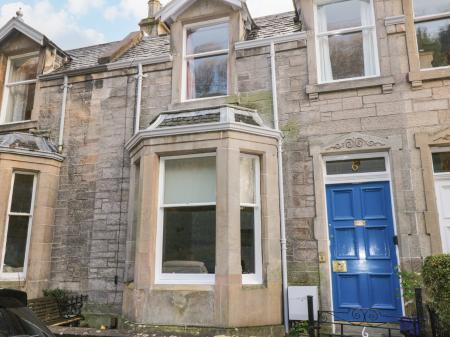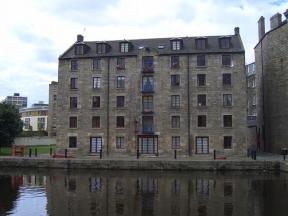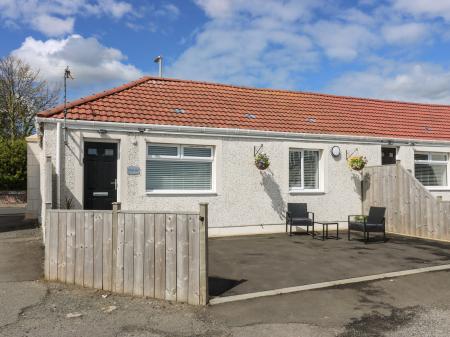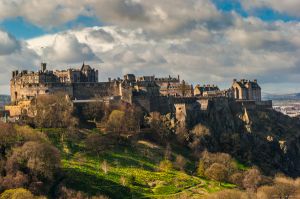
History
Edinburgh Castle stands high upon a volcanic rock. The site was occupied as early as the Bronze age, but according to Arthurian legend, the first fortification on the summit of Castle Rock was 'The Castle of the Maidens', with a shrine to Nine Maidens, one of who was King Arthur's half-sister, Morgan le Fey.We are on slightly firmer historical ground when it comes to the first known event in the castle's history. Around AD 600 a king named Mynyddog had his hall of Din Eidyn atop the rock, and here some 300 of his followers met to prepare an invasion of the Angles, in modern Yorkshire. The invasion was a disaster, and almost all of Mynyddog's men were killed. The Angles came north in AD 638 and took Din Eidyn by force, giving it the name it has held ever since, Edinburgh.
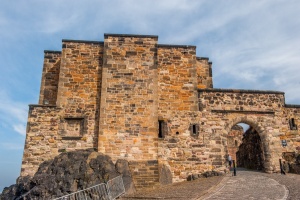
The first in a long line of sieges took place in 1296 when Edward I of England made his bid for the Scottish throne. Edward besieged and captured the castle, but the Scots were not about to let it slip from their grasp without a fight. In 1314 Sir Thomas Randolph, Robert Bruce's nephew, led a band of men in secret to the base of the cliffs at Castle Rock. In the dead of night, they scaled the cliffs and took the English garrison by surprise. King Robert immediately ordered the castle to be slighted so the English could not hold it against him again.
Yet the castle was still a prize worth fighting for, and over the next 27 years it was taken and retaken several times. After the tumult of the Wars of Independence subsided, the castle was repaired by David II. His contribution lives on in David's Tower. Then in 1511, James IV rebuilt the medieval Great Hall. Though the interior has been heavily restored, it is essentially James' hall we see today.
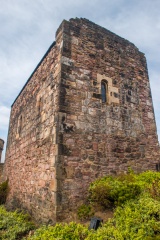
The Lang Siege
Mary, Queen of Scots married her second husband, Lord Darnley at Edinburgh Castle in 1565, and the following year she gave birth to the future James VI and I in the castle. When Mary fled to England in 1568 the keeper of the castle was Sir William Kirkcaldy. In 1571 Kirkcaldy came out in support of the exiled queen. Supporters of the infant king immediately laid siege to the castle. For 2 long years, Mary's enemies besieged the castle, but the defenders held out. Not surprisingly, the siege became known as 'the Land (Long) Siege'.It was only when Elizabeth I sent heavy artillery to the attackers that the Lang Siege came to an end. The attackers launched a fierce bombardment lasting 11 days and finally brought down the eastern castle defences. Kirkcaldy was forced to surrender and was executed. The Regent Morton immediately began the work of rebuilding the shattered defences, and much of the castle we see today is the result of this late 16th-century work, including the Portcullis Gate and the Half-Moon Battery.
The final serious siege of Edinburgh Castle took place in 1688 when James VII and II fled into exile after William of Orange was offered the English throne. The castle governor was a firm supporter of the Catholic James and held out for 3 months against the new king. This was the last real military action, though Stewart supporters threatened the castle in both the 1715 and 1745 Jacobite Risings. In 1757 the castle was converted for use as a prison, and over the following decades it held thousands of prisoners from the American Revolution, the Seven Years War, and the Napoleonic Wars. Visitors can see the prison chambers, which vividly evoke the castle's role as a prison.
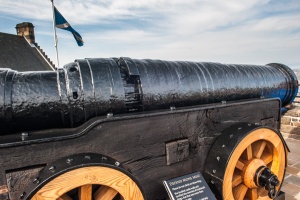
Highlights
The Royal Apartments
Dating to the 15th century, this suite of connected rooms include the small chamber where Mary, Queen of Scots, gave birth to the future James VI and I. Within the Royal Apartments is the ornately decorated chamber called Laich Hall, which is still used for state occasions.The Great Hall
Built in 1511 by James IV and used for many years as a gathering place for the Scottish Parliament. The Hall is still used for ceremonial occasions. The interior is largely a Victorian restoration, but the Hall retains its original 16th-century roof.Military Museums
The castle houses several important military museums. The largest by far is the National War Museum of Scotland. In addition, the Royal Scots Regiment maintains a museum, as do the Royal Scots Dragoon Guards.In 1927 part of the castle was converted to serve as the Scottish National War Memorial, commemorating soldiers who died in WWI.
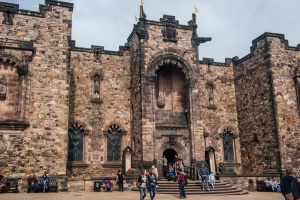
The Honours of Scotland
When the 1707 Act of Union joined Scotland and England, the Scottish Crown, Sceptre, and Sword were brought to Edinburgh Castle and locked in a heavy chest. For over 100 years the Honours remained hidden, half forgotten. Then in 1818, Sir Walter Scott gained permission from the Prince Regent (later George IV) to open the chest. The Honours were found, intact, exactly as they had been left over a century earlier.The Honours immediately went on display to visitors, and today they are probably the most popular visitor attraction at the castle. On display with the Honours is the Stone of Destiny, used to crown monarchs of Scotland for centuries before it was seized by Edward I.
The Honours and the Stone of Destiny are so popular, in fact, that there are usually long lines outside the display chambers. If you are keen to see the Honours (and they are worth seeing), I highly recommend coming very early, as soon as the castle opens, or wait until just before closing time, when the crowds will thin out.
Mons Meg
Perhaps the most famous gun in British history, Mons Meg was made for the Duke of Burgundy, uncle of James II's queen, Mary of Gueldres, in 1449. It was capable of firing a 150kg stone up to 2 miles, making it one of the most powerful guns of the medieval period. The Duke sent the gun to Scotland as a gift to the royal couple in 1457. James died a few years later at the siege of Roxburgh Castle when another of his cannons exploded.Mons Meg was used against the English and against rebellious Scottish nobles, but the sheer bulk of the gun made it quickly obsolete, and it was used for firing ceremonial salvos only. In 1671 the barrel burst during a salute to the Duke of Albany (later James VII and II). The gun was discarded and left to decay beside Foog's Gate, but thankfully was restored and is now one of the most popular visitor attractions at the Castle. Mons Meg is not, however, used to fire the famous One O'clock Gun salute.
St Margaret's Chapel
The oldest building inside the castle walls, built by David I in honour of his mother, St Margaret, around AD 1250. The chapel is a simple rectangular building, with a beautifully carved chancel arch, but otherwise very sparsely decorated. The chapel is still used for weddings and other religious ceremonies.The One O'clock Gun
A tradition at Edinburgh Castle, a small cannon has been fired at exactly 1 hour past noon every day except Sundays and Good Friday, a tradition that began in 1861. The gun is fired from Mills Mount Battery, and it is worthwhile getting there well ahead of time so you can get a good vantage point.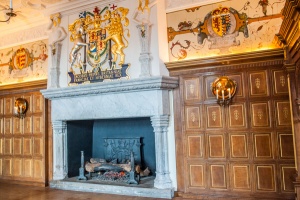
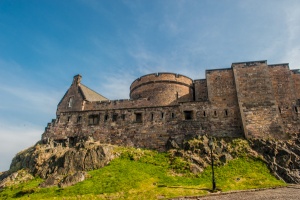
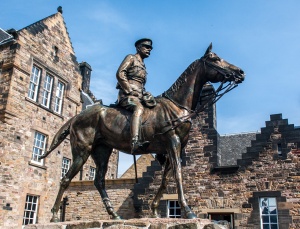
National War Museum
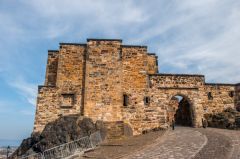
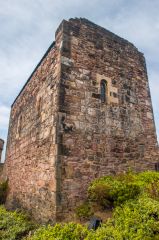
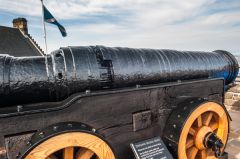
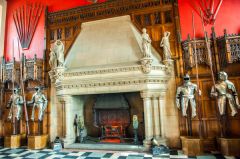
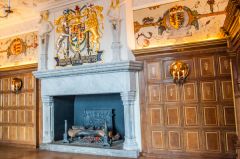
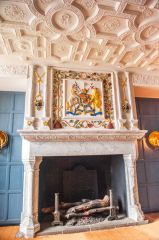
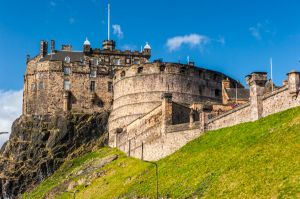
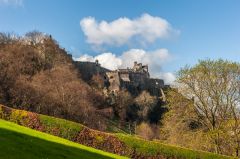
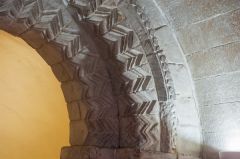
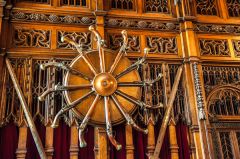
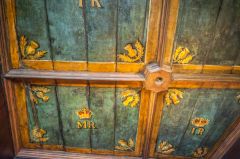
 We've 'tagged' this attraction information to help you find related historic attractions and learn more about major time periods mentioned.
We've 'tagged' this attraction information to help you find related historic attractions and learn more about major time periods mentioned.